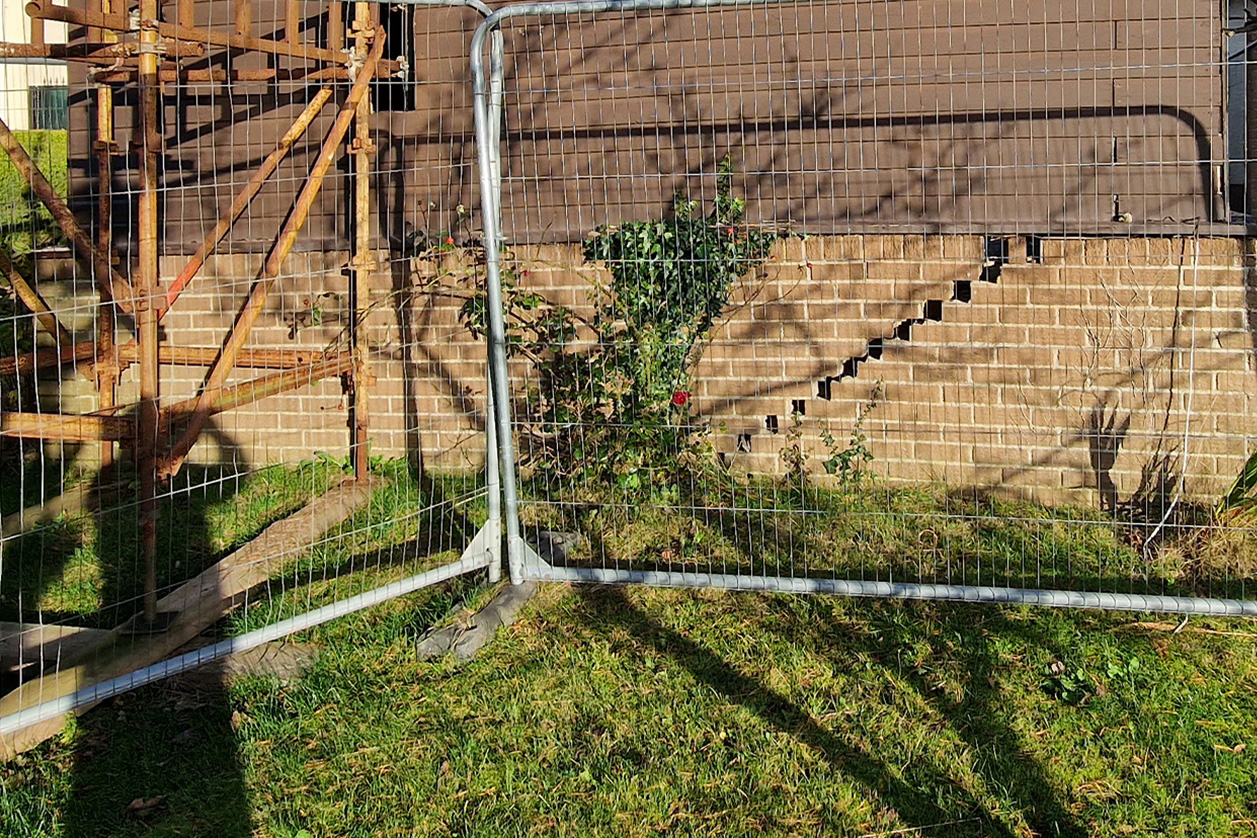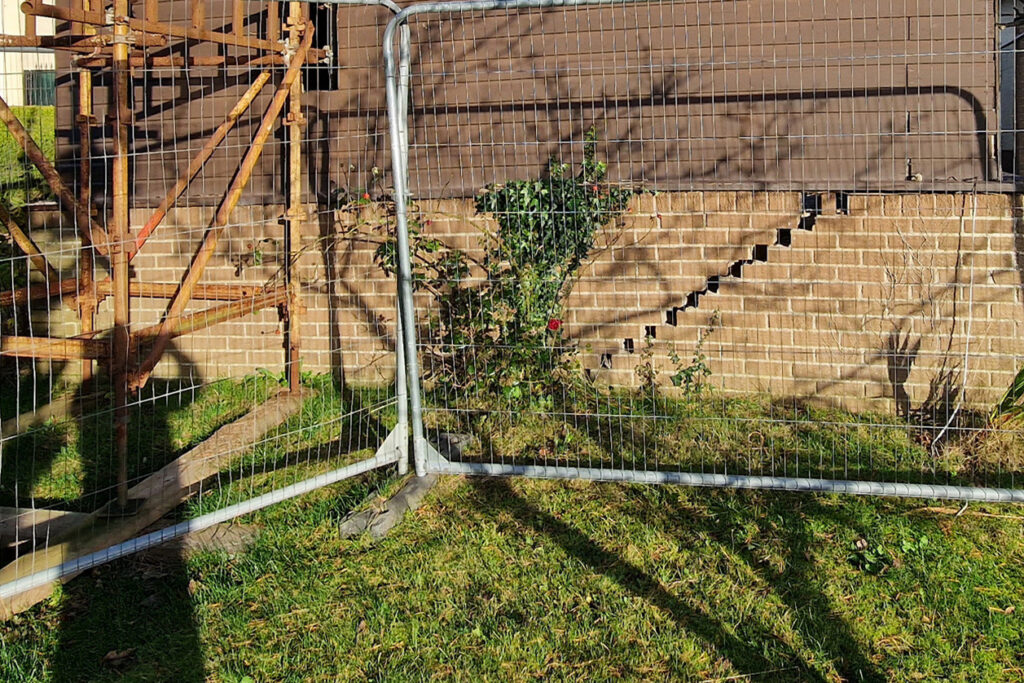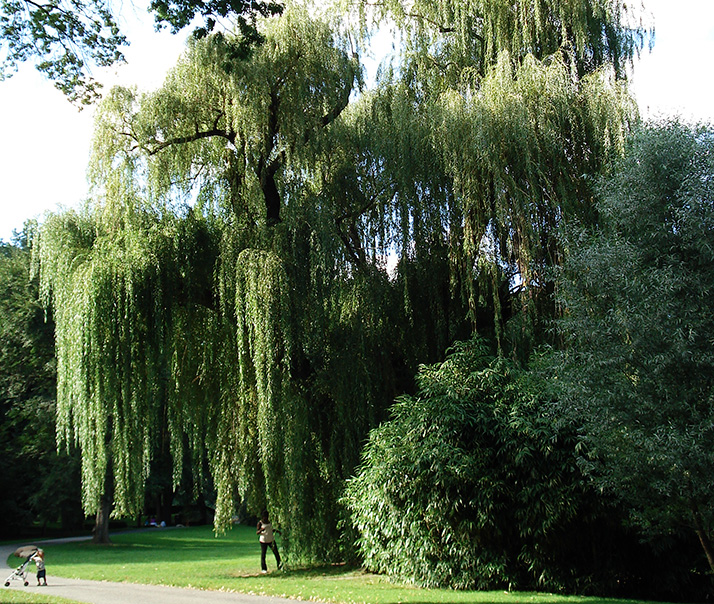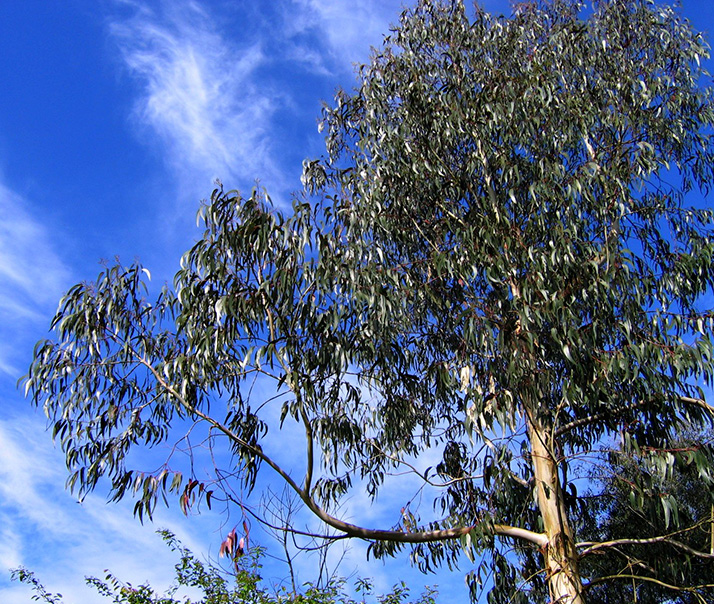December 15, 2025
Catalyst colleagues share Christmas cheer with local families
Colleagues at Catalyst Services UK have helped the company provide Christmas gifts for families,...

Subsidence is a serious threat to built structures. However, it can be difficult to detect, especially in its early stages. Also, both investigations and remedial action required must be undertaken by qualified and experienced specialists for the best long-term outcomes.
This is Part 1 of a three part guide to subsidence, drawing on the expertise of Catalyst teams in undertaking subsidence site investigations, drainage investigations, and subsidence monitoring – especially for insurance claims clients and their customers – plus technical knowledge of long-term solutions to subsidence.
Here, we provide an overview of what subsidence is (and what it is not), the general terms that define it, its causes and how it can be detected. In Part 2 we explain subsidence investigations and monitoring. In Part 3, we look at subsidence repair, prevention and insurance.
Subsidence is the vertical downward movement of a building foundation caused by loss of support of the site beneath the foundations. It can occur suddenly or gradually.
Heave is a process that is the opposite of subsidence. It happens when the soil substrates beneath a property expand and push the ground upwards. This can cause damage to built structures.
Different types of soils and soil conditions affect the likelihood of subsidence occurring.
Clay is highly susceptible to changes in moisture content. During dry periods, it can shrink and crack, causing ground movement, which can lead to subsidence. In wet conditions, clay swells, which can cause uneven lifting or heaving.
Silty soils are more likely to become compacted and eroded, increasing the risk of subsidence under load or water influence.
Sandy soils are more stable than clay but can erode easily, especially if water flows through or over them. This can cause voids that result in subsidence.
Peaty soils contain a high volume of organic material, which is prone to decomposition and compression. This can result in subsidence.
Trees and other vegetation can contribute to subsidence by extracting moisture from the ground. This can cause clay soils, in particular, to shrink. The shrinkage can result in a building’s foundations losing support, which can cause settling and cracking in walls, ceilings and floors.
Leaks in drains and sewers can cause the softening of supporting soils or can result in fine materials, in particular in sandy soils, being washed away. This can result in the foundations becoming unsupported, causing them to sink.
Culverts and springs close to buildings can wash out or soften ground. In the case of culverts, this can happen if they become damaged, allowing water to spread under buildings. This can result in foundations becoming unstable.
As with drains and sewers, leaks in water supply pipes can cause supporting soils to be washed away or softened, resulting in loss of support for building foundations.
Voids in old mine workings can undermine ground under homes and other buildings. This is a particular problem in areas where old mining works have not been recorded or surveyed.
Inadequate foundations for both the size and type of structure they are supposed to support and the type of ground they are built on can cause subsidence.
For example, this can be a particular problem for homes built in the 1930s. During this period, building materials were expensive and in short supply, resulting in many low-cost homes being built without adequate support.
Unstable geological features can contribute to subsidence. For example, buildings located over limestone substrates can be affected by voids worn in the rock by the action of water.
Continuous vibrations from traffic on roads close to buildings can, over time, cause changes in soil structures, increasing the risk of subsidence.
Due to their inherent properties, clay soils are commonly considered to pose the biggest risk of subsidence. Clay is termed as a cohesive soil.
This means its particles are easy to deform and have a tendency to adhere. They are also defined as shrink-swell or expansive soils.
This means they expand and contract depending on the amount of moisture held within them.
Shrink-swell subsidence is commonly associated with periods of drought and affects properties built on clay soils.
There is concern that changing weather patterns caused by climate change – with increasingly wet winters and hot, dry summers, may increase the risk of shrink-swell subsidence in Britain.
In the UK, London and the South East of England are areas most affected by swell-shrink subsidence because it is the region with most clay soils. For example, the London clay formation is a deposition of clay laid down around 50 million years ago which outcomes across the SE of England.
However, some geologists believe changing weather patterns caused by climate change may increase the risk of subsidence in other regions, including the West, North West and North of England.
This is because periods of heavy rain interspersed with periods
of sharp drought, causing wider fluctuations in the water table, may disturb ground conditions in some areas, resulting in higher subsidence risks.
Seasonal weather conditions can cause movement in the ground. The wetting of soils in winter and their drying in the summer can make soils swell or shrink, depending on the season. This process can increase the risk of subsidence occurring.
Consolidation settlement results from the weight of a building squeezing water out from soils, causing them to become compacted and drop down. This can result in the building becoming damaged. Consolidation settlement can start of happen as soon as a foundation is laid.
Or it can take some years to become apparent, especially in areas with saturated clay soils because water is held so tightly in the soil and takes a long time to drain away. Consolidation settlement is commonly defined as a process that happens within the first 10 years of a structure being built.
No, it is not. Consolidation settlement and subsidence are different processes. Put simply, consolidation settlement damage is caused by the building acting on the ground. Subsidence damage is caused by the ground acting on the building. In many cases, consolidation settlement does not need potentially extensive, complex and costly engineering solutions to protect the building.

Certain species of trees are more often associated with subsidence because their root systems are so extensive and they have a high demand for water.
These trees can extract significant amounts of moisture from the soil. In clay-rich soils, especially, this can lead to soil shrinkage and ground movement, resulting in subsidence.
Willows have aggressive root systems that seek out water sources or draw significant moisture from surrounding soil.
Long-lived and large trees with deep, wide- spreading roots that demand significant water, especially in dry periods.
Fast-growing trees with highly invasive root systems.
Like oak trees, elms have deep and wide- ranging root systems that extract large amounts of water.

Ash trees are a subsidence risk because of their vigorous root systems.
Eucalyptus trees grow rapidly and are evolved to survive in hot climates so are very efficient at extracting large volumes of water.
The extensive root system of London Plane trees make them a specific subsidence risk.
Cherry trees have relatively shallow but extensive root systems that can cause localised soil shrinkage.

In some cases, it may be necessary to remove trees that are found to be causing subsidence, or at risk of doing so. However, in many cases, it may be counter-productive to fell them.
This is because removing trees may affect the water balance in the soil, which could increase the risk of ground heave.
An alternative approach is to proactively manage the growth and spread of trees.
It is important to take advice from an arboriculturist who has experience and expertise in assessing the risks posed by plants and how to mitigate them.
This issue is commonly resolved through an insurance claim, if your insurance policy covers subsidence.
If this process is followed, your insurance provider will commission a subsidence investigation. This is likely to involve root sample testing and a report on the issue compiled by an arborist.
If the tree is confirmed as belonging to a neighbour or the local authority, the insurance company will send a letter informing them of the situation and stipulating what work is needed to prevent further subsidence of their customer’s property.
If the neighbour or local authority refuses to have the work done, action may be needed in the civil claims court, commonly citing nuisance or negligence.
Local authorities, other landowners and insurance companies are likely to request reports presenting evidence to show trees on their land have caused subsidence.
This evidence of causation can include:
Photographs – Showing damage caused and roots in trial pits.
Root analysis – To show roots under the foundations are the same as the species of tree suspected of causing the risk, and are likely to be that tree’s roots.
Witness statements – The property holder / policy holder will need to provide a statement with information that includes:
Soil analysis – Soil tests need to be carried out as close as possible to the time of the damage.
Subsidence monitoring – The aim is to establish the pattern of subsidence, for example, whether the movement is cyclical or progressive. This will help establish if the tree is linked with the subsidence observed.
An arborist’s report – This will be needed to provide evidence of causation and establish the level of foreseeability in subsidence activity. If is foreseeable that managing the tree will prevent further subsidence, then it may be decided the tree can be retained.
An engineer’s report – This will be needed to provide expert advice on extent of structural damage, its likely cause and the appropriate repairs needed.
Seasonal temperature changes, enhanced in some instances by the effect of heating homes in winter, can result in cracks appearing in buildings. In most cases, these do not put at risk their structural integrity;
Inadequate foundations, either due to design or the quality and quantity of materials used, can result in signs of damage that are often mistaken for subsidence;
Damage to door or window lintels (or the fitting of substandard or inadequate lintels) can result in cracking that is regularly mistaken for subsidence;
The materials in new buildings, including mortar, concrete, plaster and bricks, shed moister over time. This can result in cracking;
As already discussed, see above, consolidation settlement is often mistaken for subsidence but is a different process with a different risk profile;
This is a process of the weight of the roof exerting outward pressure on walls, which can cause the walls to crack or even deform.
If you need advice about the causes of subsidence and what to do about it, talk to the experts at Catalyst Services UK today.
Helping business and domestic customers every day of the year
December 15, 2025
Catalyst colleagues share Christmas cheer with local families
Colleagues at Catalyst Services UK have helped the company provide Christmas gifts for families,...
December 12, 2025
Gemma makes it a double with second Kudos of Year Award
Property claims handler Gemma has completed an amazing double by winning the Catalyst Services...
December 11, 2025
Insurance providers urged to join national body to meet the subsidence challenge
Effective communication will be vital if the insurance claims industry is to respond decisively...